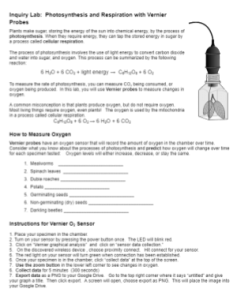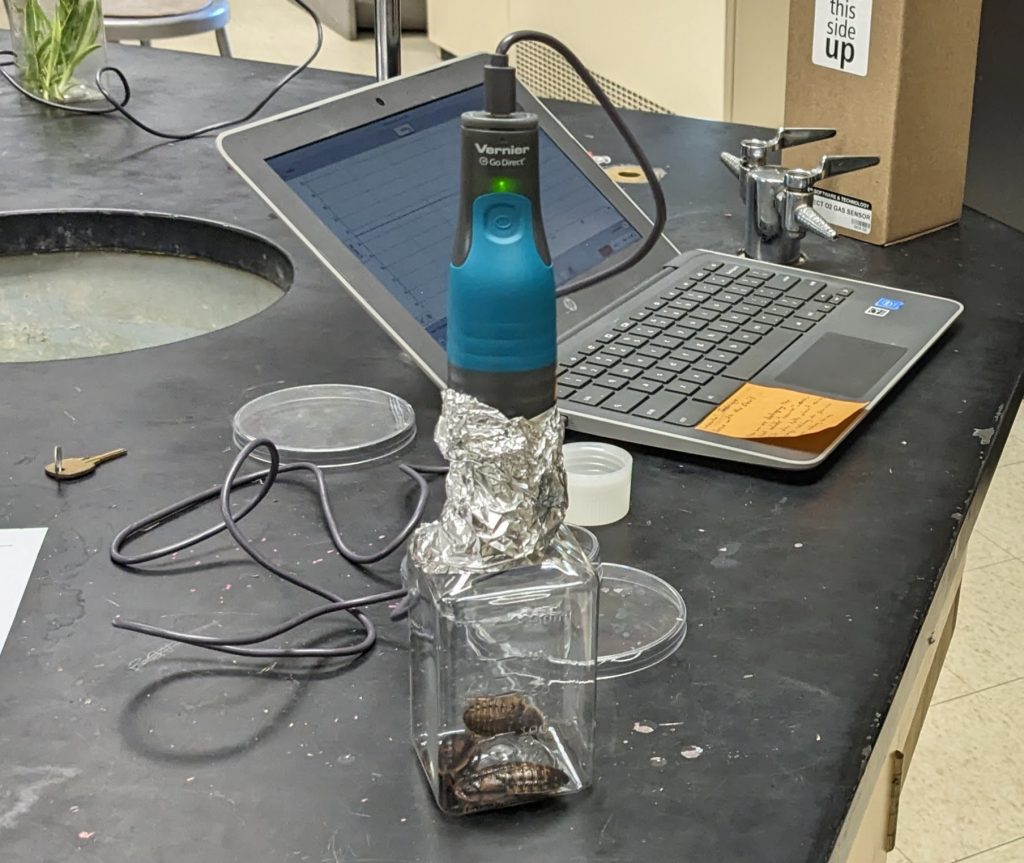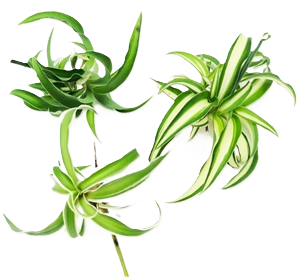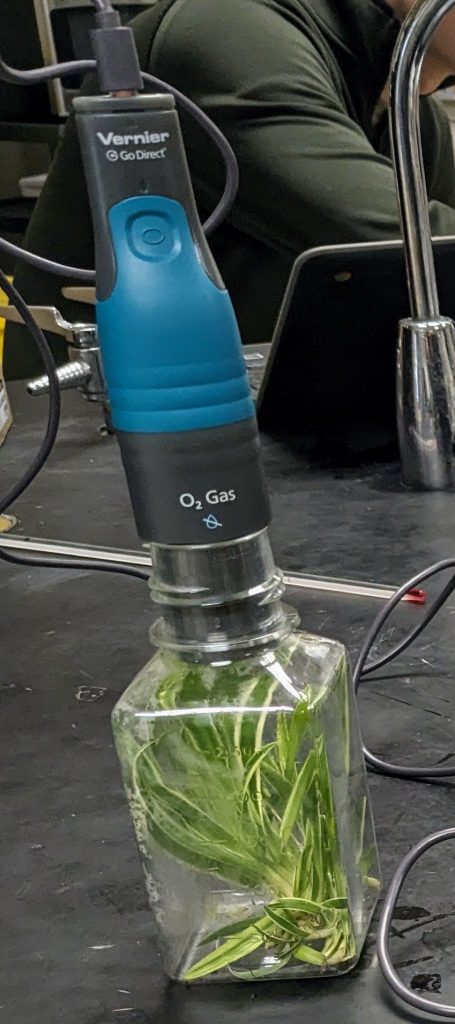
Students explore the relationship between photosynthesis and respiration with this inquiry lab. The relationship between photosynthesis and cellular respiration is complementary. The products of one process are the reactants of the other, and vice versa.
The oxygen produced during photosynthesis is used in cellular respiration, while the carbon dioxide produced in respiration is used in photosynthesis. Furthermore, the energy stored in glucose molecules through photosynthesis is released during cellular respiration to produce ATP. ATP is the energy source for cellular processes!
Students can see these processes in action using Vernier Oxygen Sensors. The lab can show students in real time how oxygen is changing in the system. They choose from a variety of specimens to test. They make predictions about how oxygen levels will change, test those predictions, and export their data as a graph.
Inquiry Questions to Explore
- How does light intensity affect the oxygen consumption of plants?
- How does temperature affect the oxygen consumption of plants?
- How does temperature affect the oxygen consumption of ectothermic animals?
- How does the oxygen consumption differ in germinating versus dormant seeds?
- How does oxygen consumption differ in plants and animals?
- How does oxygen consumption differ in intact leaves versus crushed leaves?

Experimental Design
Students design the experiment given various materials (specimens, lights, warm water, ice water, beakers, foil). They collect data on their Chromebooks and present their findings as a CLAIM, EVIDENCE, REASONING (CER) submission. I have them import their data into a Google doc and submit on Google Classroom.
Generally, if they use an animal, like the Dubia roach, the oxygen levels will decrease. If an ectothermic animal, like the roach, is submerged into an ice water bath, the respiration rate will decrease. The roach still uses oxygen, but at a much slower rate. When my students discovered this, I was impressed when one of them suggested that they could actually determine the respiration rate by calculating the slope of the line on the graph. Math!
Another successful experiment was performed on spider plant clones. If you keep one of these plants in your classroom, they are easy to grow and produce tiny shoots (clones) that can be replanted or used in experiments.


This lab replaces an older version of a cellular respiration lab that uses respirometers submerged in water. This older lab was terribly unreliable for data collection. Minor errors in set-up could lead to wildly inaccurate results. The Vernier sensors are expensive, but much more reliable!

